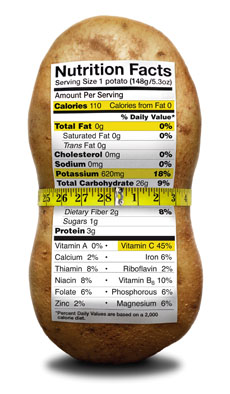TIP OF THE DAY: Teach Kids To Read food Labels
|
You can’t read or listen to the news without hearing the alarming childhood obesity statistics, and adults aren’t doing well, either.
According to the Centers for Disease Control and Prevention (CDC), childhood obesity has more than tripled over the last three decades. Today, more than one third of all children and adolescents are considered to be overweight or obese. Adult statistics are similar. One way the CDC recommends addressing the problem is for healthy eating to become a part of every child’s life. It begins with reading food labels and learning how to make decisions. The process can be made fun, and a learning experience for both kids and adults. As soon as they can read, children can begin to learn how to read food labels. Measuring food to learn portion control can be like a game for younger children, and also teaches measurements. Learning the components of food—fat, protein, salt and sugar, and how many grams are in a portion—leads to healthier food choices. Even young children can learn about vitamins and other nutrients in food. Here are some tips for teaching kids how to read food labels, provided by Fresh Healthy Vending. The company is also part of the solution, packing vending machines with good-for-you snacks instead of empty-calorie choices. (The company also offers franchises, if you want to work with healthy foods.) |
 It can be fun learning to read nutrition labels. Photo courtesy U.S. Potato Board. |
|
|
1. Understand Portion Sizes. Set out a couple of the kids’ favorite foods, such as cereal and juice, along with a measuring cup. Demonstrate how to determine what a serving size is, based on the product’s Nutrition Facts label. Let kids measure out one serving. Continue each day with different foods until they have mastered serving sizes. 2. Move On To Nutrition Facts. Once kids understand portion sizes, explain the information on the Nutrition Facts label, including calories, cholesterol, total fat, fiber, protein, total carbohydrates and sugar. Explain why it is important to know how much of each is in a serving, and what amount is considered high. For example, kids can look at a can of soda and see that it has 40 grams of sugar, and that is considered high; a serving of Cheerios has one gram of sugar, and that is considered low. This exercise will likely be a learning experience for you, too. The USDA advises adults who eat a 2,000-calorie diet to limit sugar intake to about 40 grams (10 teaspoons) of added sugar per day (in addition to the natural sugars present in fruit, milk and so forth). A teenager who follows a healthy diet can consume about 18 teaspoons of added sugars, according to USDA; but the average sugar intake of a teenager is about 34 teaspoons of sugar per day. 3. Learn To Read The Ingredients List. Which ingredients are natural, which are artificial and chemical? Remind children that fresh fruits and vegetables don’t usually have labels but are usually the most natural and healthiest options around. Show them how to look up nutrition on the Internet (searching for “apple nutrition” will provide the answers). Explain the Daily Value, and how individual product decisions add up to the day’s total food intake. 4. Do Product Comparisons. The next step is to do label comparisons, so kids can determine which choices are better for them. 6. Take It To The Restaurant Level. How can kids make the best choices at restaurants? Chain restaurants have calorie counts. A calorie booklet or app can provide guidance at those without information. Turn the process into a game, with quizzes. Keep quiz scores on the refrigerator door. Consider rewards for achievement—a trip to the movies or the zoo is also a chance to make healthy eating choices. Offer a binder to keep nutrition labels, articles and comments. It will take time and practice—and patience—but you’ll be giving children a healthy advantage for life. For more information, visit the Centers for Disease Control and Prevention, Childhood Obesity Facts. |
||


